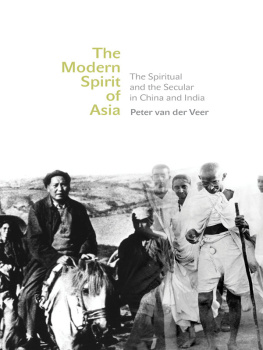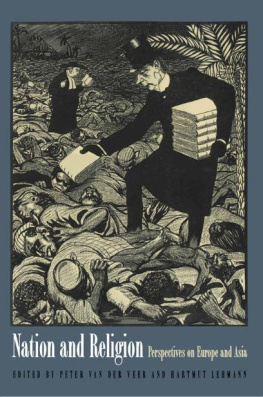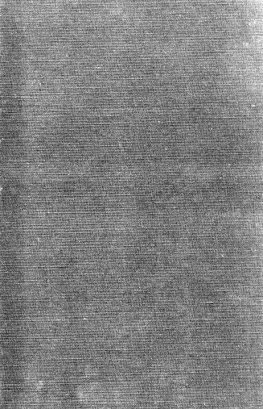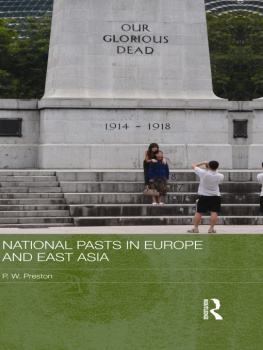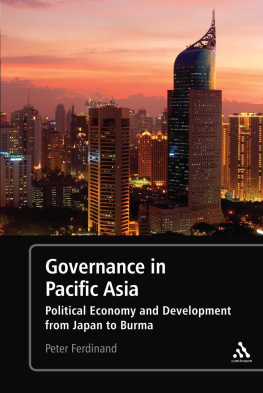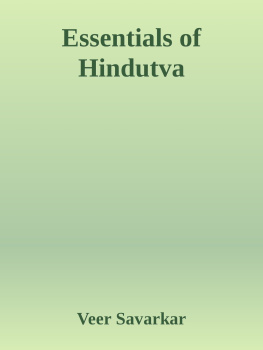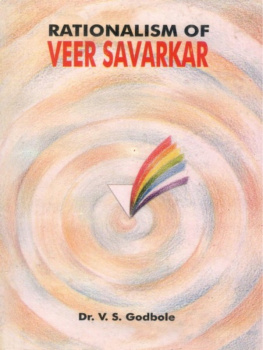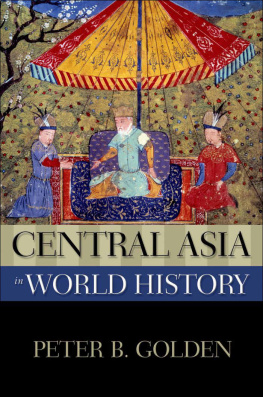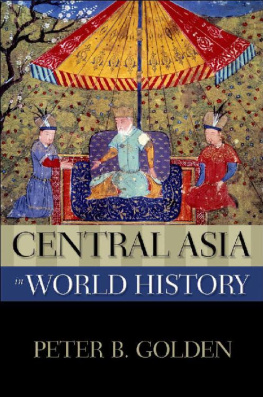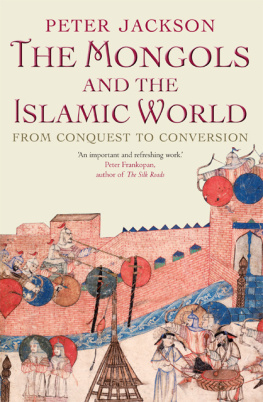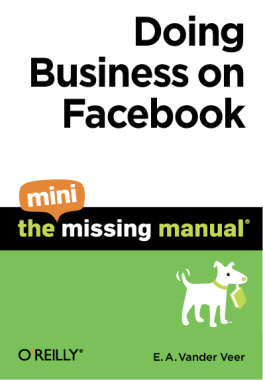Peter van der Veer - The Modern Spirit of Asia
Here you can read online Peter van der Veer - The Modern Spirit of Asia full text of the book (entire story) in english for free. Download pdf and epub, get meaning, cover and reviews about this ebook. year: 2013, publisher: Princeton University Press, genre: Religion. Description of the work, (preface) as well as reviews are available. Best literature library LitArk.com created for fans of good reading and offers a wide selection of genres:
Romance novel
Science fiction
Adventure
Detective
Science
History
Home and family
Prose
Art
Politics
Computer
Non-fiction
Religion
Business
Children
Humor
Choose a favorite category and find really read worthwhile books. Enjoy immersion in the world of imagination, feel the emotions of the characters or learn something new for yourself, make an fascinating discovery.
- Book:The Modern Spirit of Asia
- Author:
- Publisher:Princeton University Press
- Genre:
- Year:2013
- Rating:4 / 5
- Favourites:Add to favourites
- Your mark:
- 80
- 1
- 2
- 3
- 4
- 5
The Modern Spirit of Asia: summary, description and annotation
We offer to read an annotation, description, summary or preface (depends on what the author of the book "The Modern Spirit of Asia" wrote himself). If you haven't found the necessary information about the book — write in the comments, we will try to find it.
The Modern Spirit of Asia — read online for free the complete book (whole text) full work
Below is the text of the book, divided by pages. System saving the place of the last page read, allows you to conveniently read the book "The Modern Spirit of Asia" online for free, without having to search again every time where you left off. Put a bookmark, and you can go to the page where you finished reading at any time.
Font size:
Interval:
Bookmark:
The Modern Spirit of Asia
The Modern Spirit of Asia
The Spiritual and the Secular in China and India
Peter van der Veer
Princeton University Press
Princeton and Oxford
Copyright 2014 by Princeton University Press
Published by Princeton University Press, 41 William Street, Princeton, New Jersey 08540
In the United Kingdom: Princeton University Press, 6 Oxford Street, Woodstock, Oxfordshire OX20 1TW
press.princeton.edu
Jacket photographs: Mao Tse Tung (18931976) on horseback before a battle in 1947. Black and white photograph, Chinese photographer / Private Collection / Archives Charmet / The Bridgeman Art Library. Mahatma Gandhi and Sarojini Maidu on the Salt March, 1930. Black and white photograph, German photographer / SZ Photo / The Bridgeman Art Library
All Rights Reserved
Library of Congress Cataloging-in-Publication Data
Veer, Peter van der.
The modern spirit of Asia : the spiritual and the secular in China and India / Peter van der Veer.
pages cm.
Includes bibliographical references and index.
ISBN 978-0-691-12814-6 (hardcover : alk. paper) ISBN 978-0-691-12815-3 (pbk. : alk. paper)
1. Religion and sociologyChina. 2. Religion and sociologyIndia. 3. SecularismChinaHistory. 4. SecularismIndiaHistory. 5. ChinaReligious life and customs 6. IndiaReligious life and customs. 7. NationalismChinaReligious aspects. 8. NationalismIndiaReligious aspects. I. Title.
BL1033.V44 2014
306.6095dc23 2012051029
British Library Cataloging-in-Publication Data is available
This book has been composed in John Sans Lite Pro, John Sans Medium Pro, and Baskerville 10 Pro
Printed on acid-free paper.
Printed in the United States of America
10 9 8 7 6 5 4 3 2 1
For Tm
Contents
Chapter 1 |
Chapter 2 |
Chapter 3 |
Chapter 4 |
Chapter 5 |
Chapter 6 |
Chapter 7 |
Chapter 8 |
Chapter 9 |
Preface
When I was twenty I went to India just for the fun of adventurous traveling like so many of my generation. I hitchhiked to Istanbul, took the Magic Bus to Delhi, and went by train and bus to Kathmandu, Benares, Calcutta, Madras, Madurai, Goa, and Bombay. Nothing in my education had prepared me for Indian culture and society and I was particularly bewildered by Hindu practices as I saw them in Benares, Jagannath Puri, and Madurai. When I returned to Holland I studied Indology (Sanskrit, Pali, and Hindi) as well as cultural anthropology to get a better understanding of what I had experienced. I have continued to work on the anthropology of India ever since.
After a short trip to China in 2003 (during the SARS epidemic) I paid my first serious visit to China in 2004. I went to Xiamen (South China) and to Gulangyu, a small island near Xiamen, where my favorite Dutch romantic poet, Slauerhoff, had lived. The Chinese graduate students who studied at Amsterdam University where I worked at the time had told me that religion was quite unimportant in China, very different from India. However, I found on this and subsequent visits that this is the official, intellectual view and, in fact, quite beside reality. Religion is thriving in the great Buddhist monastery of Nanputuo just next to the campus of Xiamen University, and in the fishing communities not far from that campus. The rituals I witnessed reminded me very much of India.
In the last couple of years I have been learning Mandarin and have visited China often, for longer periods. My early, intimate encounter with Indian society cannot be repeated, but I feel more and more at home in China. Going to China has confronted me with a number of questions about India that I had not thought of before. It seems to me, for instance, that the question of secularism in India can be fruitfully pursued by a comparison between India and China. The literature on secularism, secularization, and secularity is too dominated by studies of Western societies. Similarly, the stereotypes that Indians and Chinese have about each other prevent them from seeing the parallels in their histories and the alternatives for the paths they have chosen. I have come to the conclusion that the modern histories of China and India are at the same time very different and very similar and that comparison would benefit our understanding of these societies. This does not imply a turning away from the immense influence of imperial modernity on these societies. Europe (and later the USA) is the counterpart of imperial interactions with Chinese and Indian societies. At the conceptual level Europe therefore remains central to the formation of Chinese and Indian modernities. It is impossible for a social scientist to understand these societies without the conceptual framework and vocabulary of the social sciences which originated in Europe. This entails a constant reflexive act of translation.
This book has had a long period of gestation. I have often felt that those friends and colleagues who had warned me that I was too old to start learning a new immense culture and language had probably been right. However, the excitement about learning Chinese and learning about China (especially in comparison to better-known India) has kept me going. I am grateful to Professor Song Ping for introducing me to Xiamen, and to Professor Wu Da for introducing me to Shanghai and Beijing. I have been gracefully welcomed in their circles by China scholars, including Mayfair Yang, Prasenjit Duara, Kenneth Dean, Vincent Goossaert, David Palmer, Adam Chau, Ji Zhe, Richard Madsen, Rob Weller, and many others. I have given papers on my research at the University of California, Santa Barbara; at the London School of Economics; at CNRS in Paris; at the National University of Singapore; at Boston University; at the New School in New York; at Minzu University Renmin University, and at the Chinese Academy for Social Sciences (CASS), all in Beijing; at Shanghai University and Fudan University, both in Shanghai; at the Tata Institute for Social Sciences in Mumbai; and at various SSRC conferences. A Chinese translation of this book has been prepared by Professor Jin Ze of the Institute for World Religions of CASS.
This book could not have been written without the support of Utrecht University, which awarded me a Distinguished University Professorship that gave me full freedom for research; as well as that of the Max Planck Society, which appointed me as a Member and as a Director at the newly founded Max Planck Institute for the Study of Religious and Ethnic Diversity in Gttingen. I am grateful to subsequent Rectores Magnifici (Professors Gispen, Stoof, and van der Zwaan) of Utrecht University and to the Presidium of the Max Planck Society (Professors Gruss and Schn) for their trust in me and my work. The writing was further supported by fellowships at the Asia Research Institute of the National University of Singapore and the Institute for Human Sciences in Vienna. The wonderful scholarly environment of the new Max Planck Institute in Gttingen has been perfect for my kind of comparative work and I want to thank my colleagues, and especially my co-Director Steve Vertovec, for their encouragement.
At Princeton University Press Fred Appel continued to give unstinting support even when the project took much longer than both of us had thought. I want to thank especially Prasenjit Duara, Chris Fuller, and Jeffrey Kripal for their stimulating comments on my manuscript.
Next pageFont size:
Interval:
Bookmark:
Similar books «The Modern Spirit of Asia»
Look at similar books to The Modern Spirit of Asia. We have selected literature similar in name and meaning in the hope of providing readers with more options to find new, interesting, not yet read works.
Discussion, reviews of the book The Modern Spirit of Asia and just readers' own opinions. Leave your comments, write what you think about the work, its meaning or the main characters. Specify what exactly you liked and what you didn't like, and why you think so.

